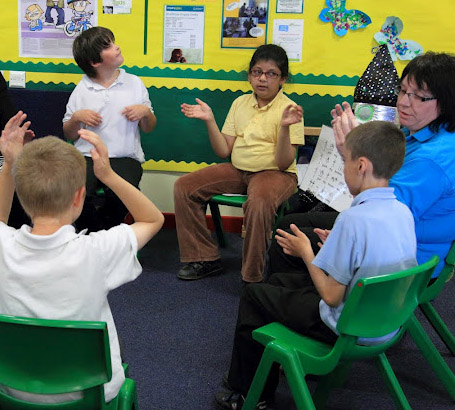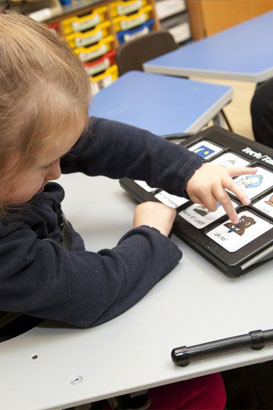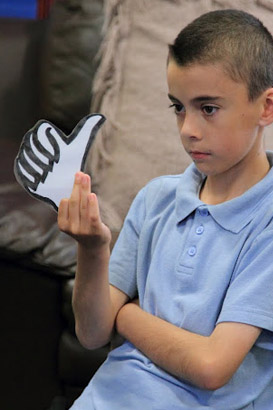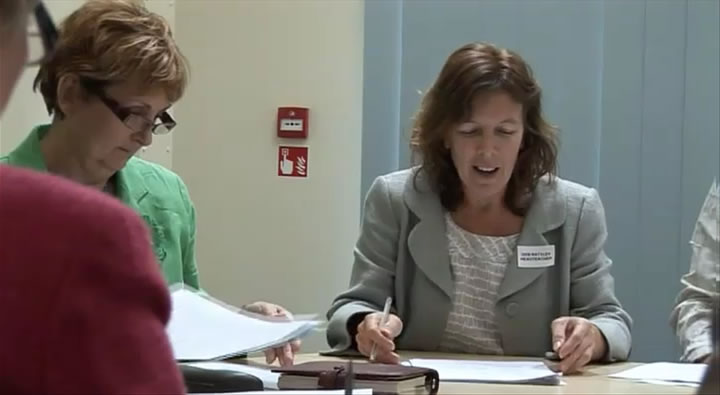
Communication occurs for two main reasons:
- For functional reasons, eg to obtain something or to have needs met, to solve a problem, negotiate or refuse something; or
- For social reasons, eg to comment on something, to share experience or for mutual pleasure.
In the clip from a review meeting, Sophia's class teacher, Jess, describes Sophia's progress and potential in communication.
If Sophia was in your class, what do you think you would need to do next to support Sophia's communication?
Some suggestions
You might consider the following possibilities:
- Make opportunities for Sophia to communicate.
- Insist that she says what she wants either through signing, her Tech/Talk or using her voice.
- Help her to develop her skills further in signing, using her Tech/Talk and speaking.
- Praise her efforts to communicate.
Return

How can professionals and parents improve children's communication skills?
Click for the answer
Professionals and parents need to:
- Understand that language development is underpinned by earlier basic communication skills promoted through interaction with parents, teachers and caregivers;
- Observe children closely to spot signs of progress; and
- Where appropriate use supportive communication systems, eg signs and symbols, or utilise new technologies to maximise communication.

Signing systems developed for children with learning difficulties offer visual support to help them communicate. They provide additional gestural cues for the spoken word but do not replace speech.
There are two signing systems in common use in special schools:
- Makaton, which supports the communication of key words; and
- Signalong, which offers a large number of signs.
A wide range of teaching resources and computer software is available commercially which can be used to support communication and literacy through signing.
Technology and signing in action
-
 Video 12:30A story session using a broad range of supported communication systems.
Video 12:30A story session using a broad range of supported communication systems. -
 Video 22:21A tablet device is used to catalyse communication.
Video 22:21A tablet device is used to catalyse communication. -
 Video 34:06Using Makaton signing in a special school.
Video 34:06Using Makaton signing in a special school.
